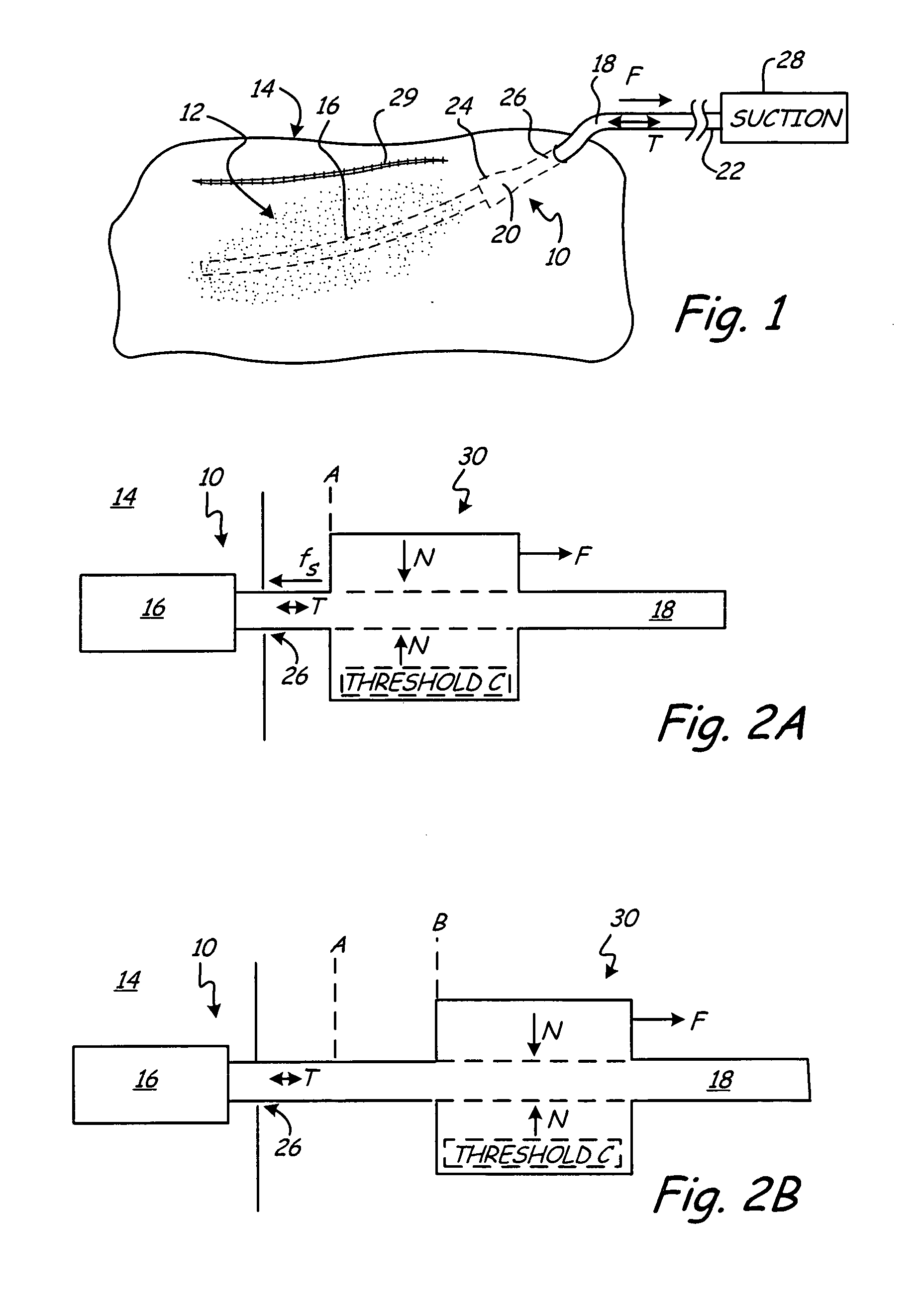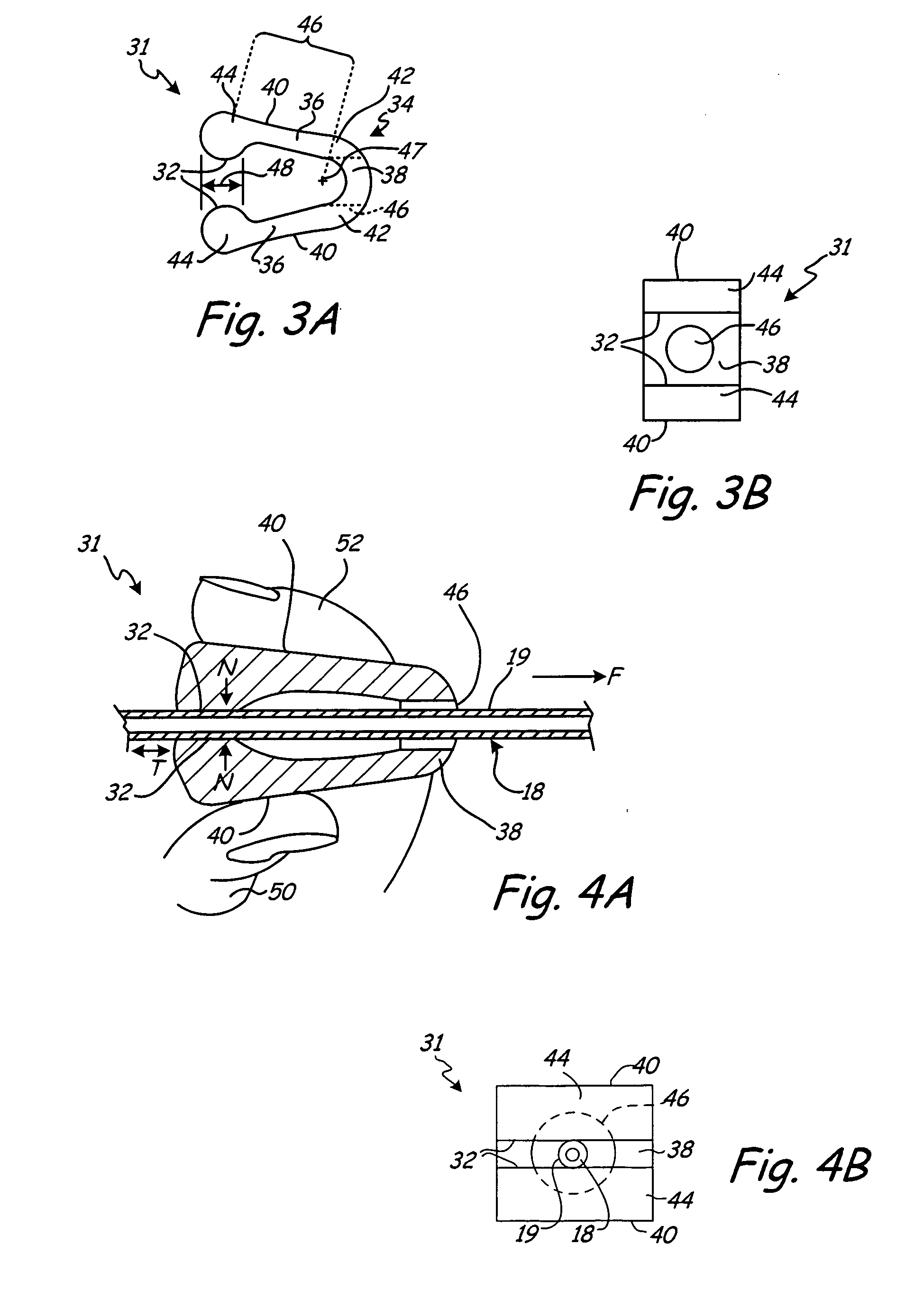Wound drain removal device
- Summary
- Abstract
- Description
- Claims
- Application Information
AI Technical Summary
Problems solved by technology
Method used
Image
Examples
Embodiment Construction
[0027]FIG. 1 is a schematic representation of wound drain 10 implanted within wound 12 of patient 14. Wound drain 10 includes drain 16 and outflow tube 18 having distal end 20 and proximal end 22. Distal end 20 of outflow tube 18 connects to wound drain 10 via connection 24.
[0028] To drain fluid from wound 12, drain 16 is located within, or adjacent, to wound 12 and is in fluid communication with outflow tube 18. Outflow tube 18 exits patient 14 via aperture 26 formed in tissue adjacent to wound 12. Proximal end 22 connects to an external suction source 28 to draw fluid from wound 12 into drain 16 and through outflow tube 18 to a reservoir associated with external suction source 28.
[0029] Methods for implanting wound drain 10 within patient 14 are well known in the art. For example, in one such method, drain 16 is positioned within, or adjacent to, wound 12. A trocar (not shown in FIG. 1) attached to proximal end 22 of outflow tube 18 is passed through tissue adjacent to wound 12 ...
PUM
 Login to View More
Login to View More Abstract
Description
Claims
Application Information
 Login to View More
Login to View More - R&D
- Intellectual Property
- Life Sciences
- Materials
- Tech Scout
- Unparalleled Data Quality
- Higher Quality Content
- 60% Fewer Hallucinations
Browse by: Latest US Patents, China's latest patents, Technical Efficacy Thesaurus, Application Domain, Technology Topic, Popular Technical Reports.
© 2025 PatSnap. All rights reserved.Legal|Privacy policy|Modern Slavery Act Transparency Statement|Sitemap|About US| Contact US: help@patsnap.com



